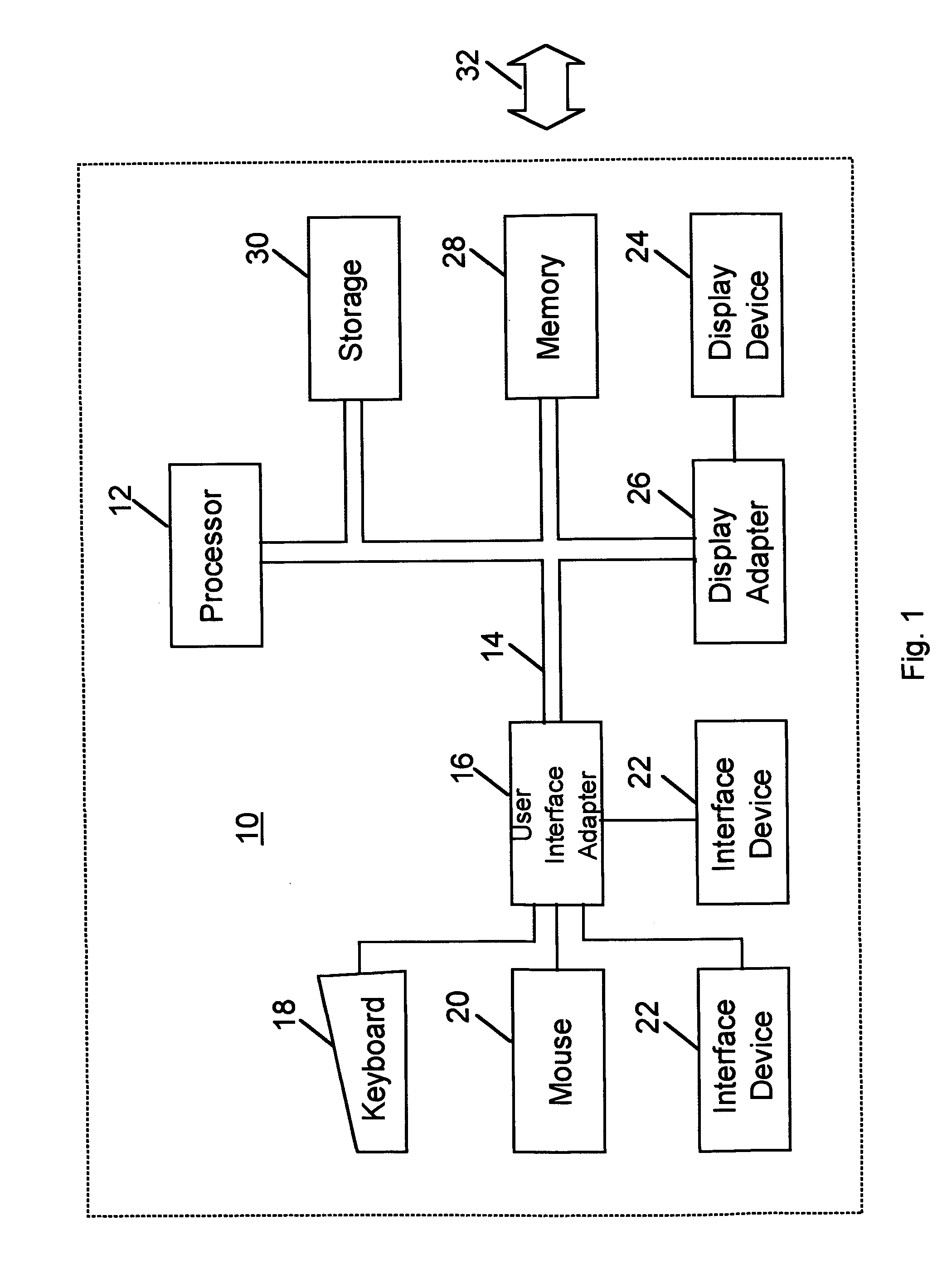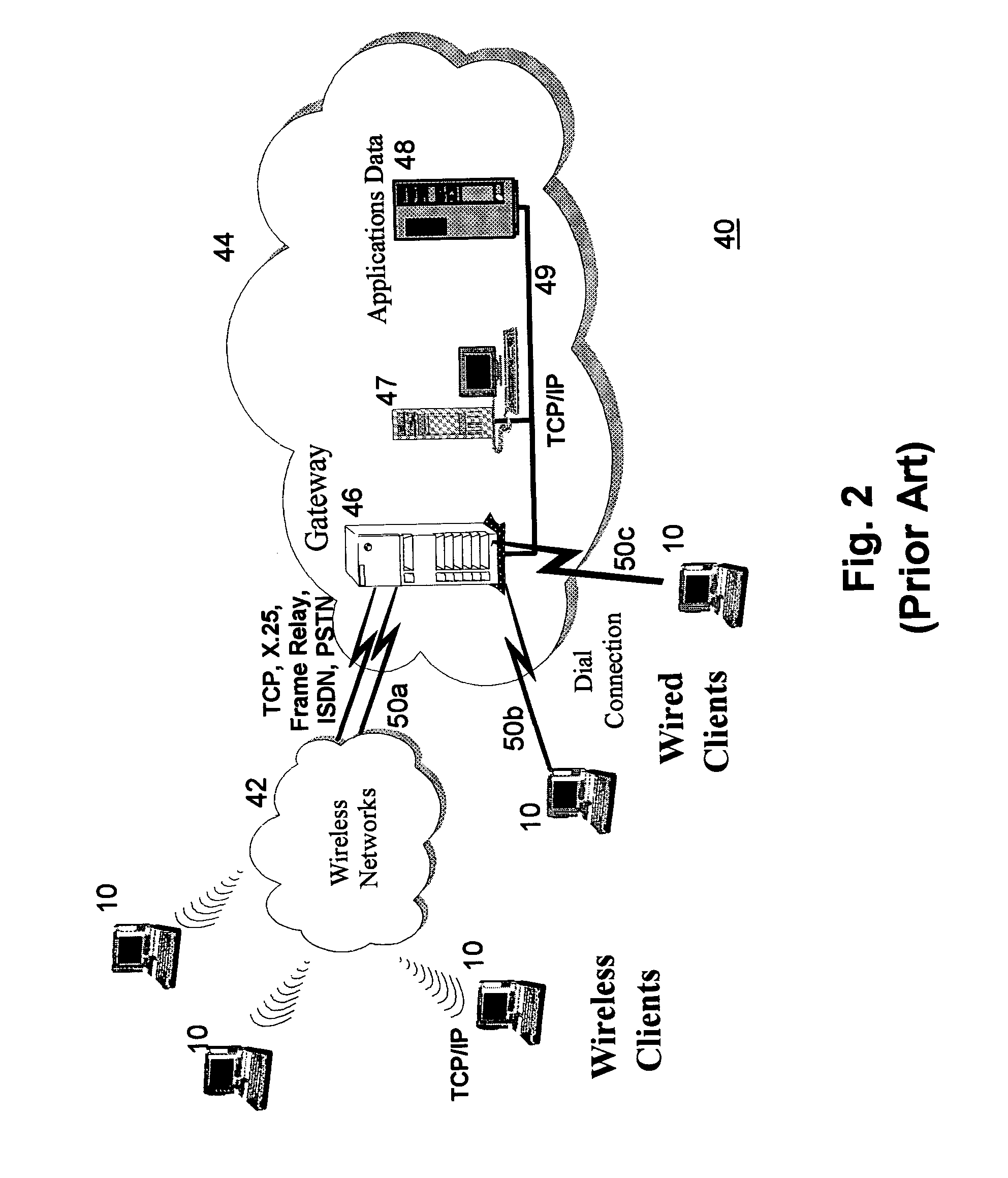Piggy-backed key exchange protocol for providing secure, low-overhead browser connections when a client requests a server to propose a message encoding scheme
a key exchange protocol and client-server technology, applied in the computer system field, can solve the problems of increasing the burden on end users, increasing the complexity and expense of application development and testing, distribution and support, and affecting the implementation of server software tasks,
- Summary
- Abstract
- Description
- Claims
- Application Information
AI Technical Summary
Benefits of technology
Problems solved by technology
Method used
Image
Examples
first preferred embodiment
[0080]In a first scenario, the client and server share a common message encoding scheme, M. In this scenario, it is assumed that both the client's and the server's certificates are available to both parties if public key cryptography is being used. When using private key security, it is assumed that both parties possess the shared key. The novel piggy-backed key exchange protocol of this first preferred embodiment wherein the client requests a Web page (referred to simply as a “page,” for ease of illustration) and the server transmits the requested content is represented abstractly for this scenario as follows:[0081]Client-->Server: GET “page”, M(“parameters”, . . . )[0082]Server-->Client: M(“content”, . . . )
[0083]The first of these two flows indicates that the client sends an HTTP GET request for a page located at a particular URL “page,” along with parameters (and perhaps other information) that have been encrypted according to the shared scheme M and piggy-backed onto the GET me...
second preferred embodiment
[0100]In a second scenario, the client and server do not have a common message encoding scheme with each other. They do, however, each share an encoding scheme with some trusted third party (TTP). This is the situation frequently encountered in mobile communication systems, where a central database is utilized to administer the sign-on of mobile clients into the system. For example, such a central database may be incorporated into the central subscriber management system of cellular mobile communication networks such as GSM (Global System for Mobile communication), CDMA (Code-Division Multiple Access), PHS (Personal Handyphone System), etc. Being connected via a separate data communication network, such as the wired Internet, it is safe to assume that any traffic between the server and the TTP in this scenario travels over an established secure connection and is therefore not bound by the same restrictions as between the client and server or between the client and the TTP. (Accordin...
third preferred embodiment
[0128]In a third scenario, the client may initially use an encoding scheme which it shares with a trusted third party, but not with the server, where the server has no trust (and possibly no shared message encoding scheme) with this TTP. Or, the client may simply believe that the server supports—and will use—a particular encoding scheme proposed by the client, when this is not the case. In this embodiment, an additional request / response pair must be sent between the client and server to achieve a secure message exchange. This request / response pair preferably takes one of two alternative forms, each of which will be described in turn.
[0129]In a first aspect of this third embodiment, the request / response pair uses the novel technique disclosed in the U.S. Patent Application titled “Exchanging Supplemental Information Fields Between a Client and a Server,” having Ser. No. 09 / 415,646, which is assigned to the same assignee and which is incorporated herein by reference (hereinafter, the ...
PUM
 Login to View More
Login to View More Abstract
Description
Claims
Application Information
 Login to View More
Login to View More - R&D
- Intellectual Property
- Life Sciences
- Materials
- Tech Scout
- Unparalleled Data Quality
- Higher Quality Content
- 60% Fewer Hallucinations
Browse by: Latest US Patents, China's latest patents, Technical Efficacy Thesaurus, Application Domain, Technology Topic, Popular Technical Reports.
© 2025 PatSnap. All rights reserved.Legal|Privacy policy|Modern Slavery Act Transparency Statement|Sitemap|About US| Contact US: help@patsnap.com



